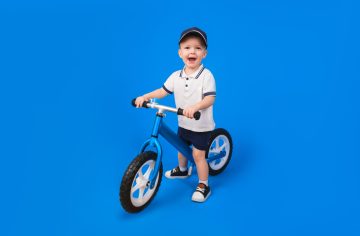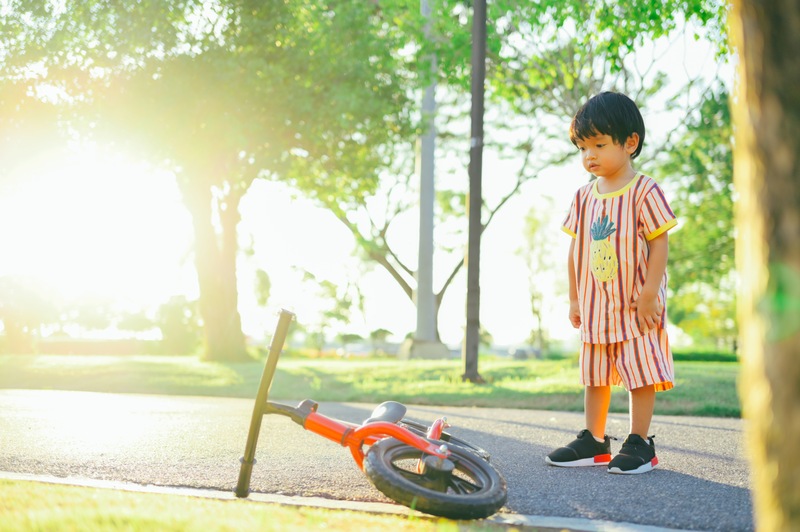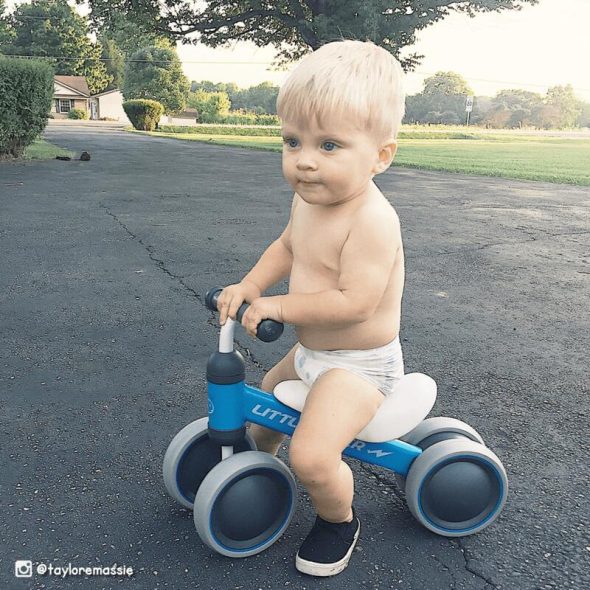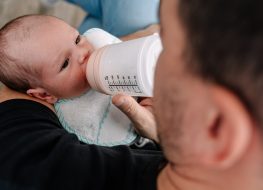
Parents who love the outdoors are excited to share the fun and excitement with their children. They are eager to take their kid biking with them because doing so would be a milestone for any adventurous parent.
That’s why parents want to know when their baby can ride a bike seat. The answer is as early as 12 months old or as soon as they can walk. But you must have an appropriate bike seat that suits your biking skills and your baby’s comfort.
Before you prop them up on a makeshift basket and just go, take a pause. You must ensure safety before setting out on a grand adventure with your best pal. Safety should be the number one priority, and you must consider many factors.
Let Ashtonbee walk you through available bike seat options. Then, we’ll address training your toddler on how to ride a bike as they grow up.
Child Bike Seats: An Early Introduction for Babies
To help your little one adapt to the sensations and experiences of biking, you can put them in a bike seat. This equipment lets your baby tag along whenever you’re out for a ride and serves plenty of benefits.
For one, a bike seat saves you the hassle of hiring a babysitter while you’re out biking. You can bring them along and allow them to enjoy the scenery while they soak in the sun. All that is good for you and the little one.
To get the most out of the experience, you have to select the appropriate bike seat. You have three options, each of which has different pros and cons.
Front Bike Seat
This seat is strapped in front or on top of your bike’s handlebar depending on the bike’s model. The front bike seat provides the best scenic experience for your baby on the bike because they can see everything.
Choosing the front bike seat is best if you want your child to adapt to the sensation of riding a bike quickly and effectively.
But front bike seats have some drawbacks, too. Since the weight shifts at the bike’s front, steering the handlebar becomes more challenging. This setup affects your balance.
Putting your baby in front also exposes them to significant safety risks. While the seat allows you to check on your child frequently, you’ll have to drive extra carefully to avoid head-on collisions. At best, we recommend using the front seat if you’re a careful rider. Choose an area with smooth bike trails and little to no traffic if you’re going for the front bike seat.
Rear Rack Seat
The rear rack baby seat offers better safety and stability than the front seat, with a minor downgrade in experience.
Since the rear seat shifts your baby’s weight at the back, this will result in more stable rear wheel traction. That means better balance and more stability as the bike gains speed.
In terms of safety, the rear rack offers excellent protection. You are in front of your child and covering their frontside safely. The back side of the rear seat also has a guard which keeps your baby sitting upright.
The rear rack is the perfect seat for parents who want to go on a city stroll. Their babies will enjoy the back seat’s comfort and safety and can take in the roadside scenery.
Bike Trailer
The bicycle trailer is the safest bet if you take your baby out for flat surface riding. It’s a seat with two wheels you can attach to your rear rack to turn it into a cargo bike.
Bike trailers prioritize safety and comfort over scenic views. It’s safe because it’s partially enclosed and it’s spacious. It’s stable because it’s low on the ground and has two wheels for support.
The only drawback is it limits the kid’s riding experience. Since you install the enclosed bike trailer at the back of your bike, your child won’t see much of the scenery.
A bicycle trailer is an excellent choice for practical purposes like taking your baby out for a quick stroll at the park’s bike paths, the nearby grocery store, or around the town.

The Baby Balance Bike Transition: Letting Your Child Learn How To Ride
By the time your child gets past the 18-month mark, they should be familiar with the experience of biking—assuming you’ve been taking them on bike rides using baby seats. At this point, they’ll be ready to transition to a balance bike.
You can still tag them along your rides, but you’ll have to introduce a balance bike to their playtime to help them learn how to ride independently. Here are the benefits you can expect.
Allows Them to Develop Bike Handling
After riding with you on a baby seat, you can get them a balance bike and allow them to steer its handlebars. The balance bicycle keeps the standard seating feature but adds the ability to navigate while keeping out the most challenging part of bicycling—the pedaling. Balance bikes promote safety and allow focus on developing bike handling.
Helps Practice Their Balance
One great feature of a baby balance bike is it allows your child to put both feet on the ground. This helps them ride carefully and practice their balance with little risk while they push the bike forward.
Eventually, your child will learn how to lift their feet off the ground and wheel the bike forward in a straight line. Playing this way is how they learn to ride.
Makes the Transition To Pedal Bikes Faster
A balance bike is a great way to speed up the training process for pedal bikes. The more they get used to balancing the bike on two wheels, the less they have to learn when they switch to bicycles.
Develops Their Motor and Coordination Skills
When kids start riding a bike, it involves the coordination of limbs. So if you’re training your little one, their hands and arms must steer the handles while the legs and feet pedal for momentum. They develop this skill when playing with balance bikes.
Balance bikes come without a pedal, so your little one can practice the coordination of arms and legs without falling a lot, which can happen when they jump into pedal bicycles too quickly.
How To Choose a Balance Bike for Your Baby
Bicycle riding works better when the equipment fits your baby’s needs. To know if it does, the bike must complement your little one’s height and weight.
The bike must also be durable, safe, and ergonomic for your child so they can maximize playing with the balance bike. Here’s what you must scout when shopping for a balance bike.
The Right Seat Height
The saddle height should be at least an inch below your toddler’s crotch.
Steel Frames
Choose a stainless steel bike frame because it’s durable, light, and long-lasting. It can withstand rigorous play and will serve its purpose long after your child has outgrown it.
A Wide Saddle
Getting a wide saddle lets your little one stay stable while sitting. It prevents them from falling over the back of the balance bike.
Slip-Resistant Tires
Traction is vital for safety, especially if your little one plays on smooth surfaces. So an anti-slip tire will keep the bike upright even on sharp pivots.

Quick Safety Tips for Balance Infant Bikes
Safety must come first to maximize your child’s fun and play. So take heed of these quick tips to ensure your little one is having fun while learning how to ride a bicycle.
Always Wear a Helmet
A hard rule whenever riding any bike is to always wear a helmet. The head is vital to our life, and that goes for everyone including your kid. So buy your child a good helmet with cute designs and made of hard plastic to make wearing a helmet more appealing to them.
Amp Up Safety With Other Protective Gear
When playing with the balance bike outdoors, have your child wear overall protective gear. Get them a long sleeved shirt and pants, and make them wear knee pads for safety.
Let Your Little One Figure It Out
Give your child the balance bike and let them play with it. Watch them, but don’t interfere while they’re playing with the balance bike. Let them figure out how to wheel it forward and backward, so they maximize development.
Occasionally, you can play with them and push them along or guide them on how to ride the bike, but afterward, keep a close watch and let them learn on their own.
Start With a Bike Seat, and Continue With a Balance Bike
A child learning how to ride a bicycle is a long journey. To maximize its benefits, you have to start as early as a year old. An early start plants the seed of riding, which can blossom into a passion later in life.
It can all start with a bike seat. Tag your child along and let them experience riding on an adult bike with you. Then, they give them a balance bike to experience riding by themselves. The balance bike will serve as a transition to pedal bicycling.
By using a balance bike, you help create a smooth and efficient environment that lets them train while they play. This makes bicycling fun, as it should be.
Still want to know when a baby can ride in a bike seat? Check out our website for more answers. If you’re curious about balance bikes, you can check out our collection of baby essentials now.



